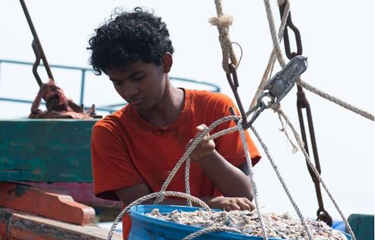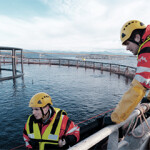New film, "Buoyancy," tackles issue of slavery in Thai seafood industry

An Australian filmmaker is hoping that his debut feature film entitled, “Buoyancy,” will help to raise greater awareness of human trafficking and slavery on Thai fishing vessels.
Rodd Rathjen’s award-winning film highlights the plight of thousands of migrant Cambodian workers trapped in modern slavery in the Thai seafood industry. Shot in Cambodia in the Khmer and Thai languages, the film centers on the plight of an impressionable 14-year old Cambodian boy, who sets out to escape poverty by finding work in a Thai factory, but finds himself sold by a broker and enslaved on a fishing trawler. The result is a harrowing exposition of a reality that remains an issue for the Thai industry, despite ongoing efforts to combat it.
Rathjen is planning to hold screenings in remote Cambodian villages, with the aim of educating local people about the dangers of travelling on a promise of work, and stopping them from falling victim to traffickers.
Interviewed in Asian Movie Pulse, Rathjen explained that he wanted to bring greater exposure to human rights violations through his film. In a best-case scenario, his wish was that it might inspire change and provoke greater political will.
“The issue of modern slavery in the Thai fishing industry has been ongoing for decades. When we screen the film in Cambodia, it will hopefully act as a deterrent to those from vulnerable communities who are thinking about working in Thailand. And for international audiences, it might prompt people to consider the impact of the seafood products they buy,” he said.
To research his film, Rathjen spoke to NGOs in Thailand and Cambodia involved in repatriating survivors of the fishing industry. Through these contacts, he was able to interview survivors, learn about their experiences on the fishing boats, and weave their stories into the film. He also spoke to ex-captains, government officials, and Cambodian families to gain different perspectives.
Minor roles in the film were given to men who had worked on trawlers, including the boat’s captain, who had worked on a trawler between the ages of 11 and 13. The aim was to give authenticity to the film and ensure that it expressed the harsh reality of life in slavery at sea.
While there are many informative documentaries about the subject, Rathjen said he felt that a feature film format would get the message across more powerfully to the target audience.
“My approach was to engage the audience with a complete picture, from leaving Cambodia to being trafficked into Thailand, then being exposed to an inhumane world. It delves into the circumstances that creates slaves and looks into the psyche of how a slave driver can become so brutal,” he said.
According to the United Nations, there are around 4.9 million migrants in Thailand, the majority of whom originate from neighboring countries including Myanmar and Cambodia, and who work in sectors such as seafood and domestic work.
Over the past five years, Thailand has made considerable efforts to clean up its fishing industry after a series of exposés appeared in the media, widely-disseminated coverage by the Associated Press.
The reports led to the U.S. government to downgrade Thailand in its annual U.S. Trafficking in Persons (TIP) Report, and the European Commission issued a yellow card warning, pointing to issues in Thailand related to labor abuse.
As part of a broad series of reforms, in January 2019, Thailand became the first Asian country to ratify the International Labor Organization’s (ILO) Working in Fishing Convention (C188). Thailand will enter the convention officially on 30 January, 2020, joining 13 other countries including France, Norway, and South Africa. The convention addresses working and living conditions onboard fishing vessels, as well as requiring access to medical care and social security.
Thailand’s other reforms have included the introduction of new fishing laws regulating wages and working conditions, and the upgrading of monitoring, surveillance, and enforcement capabilities. One of the cornerstones of the reform efforts is the Port In Port Out (PIPO) network, which is used to combat both illegal fishing and labor abuses. All fishing vessels over 30 gross tons must report to their local PIPO center before and after every fishing trip for inspection, and workers must carry legal documents which allow them to check in and out of port. However, inconsistencies across the country mean that the positive efforts of the majority of centers are still being undermined by those with weaker inspections.
On the whole, Thailand’s reforms have been welcomed by the NGO community, and the country has received a positive response from the U.S. and E.U. governments.
But some human rights organizations want the international community to continue its monitoring of the Thai fishing industry, given how deep-rooted labor issues are within the country’s fishing and seafood sectors.
Photo courtesy of Rafael Winer/Buoyancy






Share